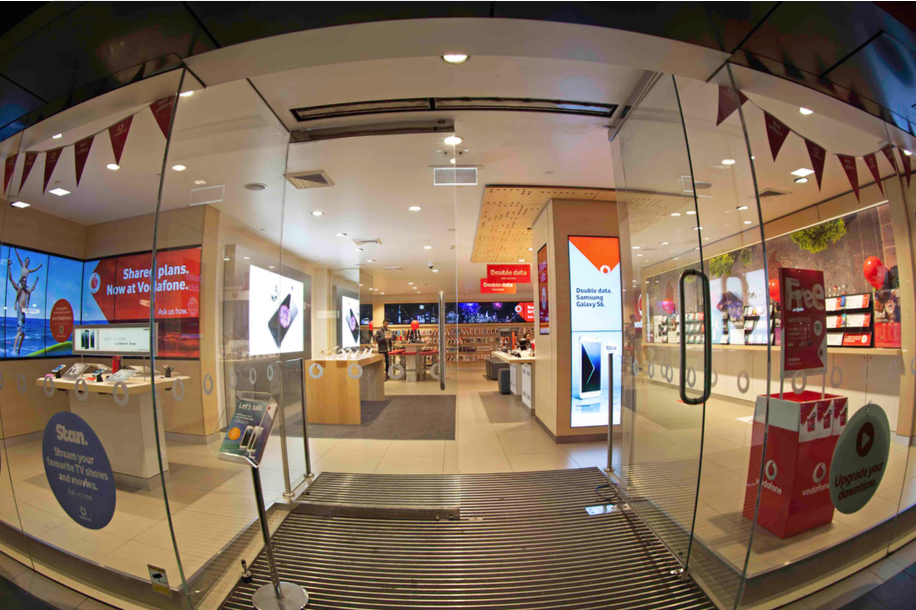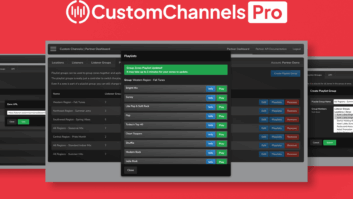
Jason Cremins, founder and CEO of Signagelive, explains how digital signage has become the glue in retailers’ Omni-channel strategies.
What part is digital signage and signage software playing in helping retailers improve customer engagement and the shopping experience?
Retail is a key market for the digital signage sector and is certainly a strong and growing vertical for Signagelive. We have been delivering digital signage solutions for retailers, through our global network of value added resellers (VARs), since the late 1990’s with pioneering installations for Harrods and Lunn Poly (now Thomson).
Over the last two decades we have seen the uptake of digital signage by retailers expand rapidly. Early digital signage networks in retail could only be justified through the improvement of branding and retail theatre, as the costs of displays and digital signage hardware was prohibitive for most. Now, with the advent of SoC powered displays from the leading manufacturers, coupled with the affordability of cloud-based CMS platforms, digital signage in retail is affordable to the masses.
Retailers are now routinely installing SoC and Cloud-based CMS platforms over traditional static posters and lightboxes; due to the affordability and return on investment which makes digital signage as cost effective, if not more, than printed graphics. This is especially true for applications such as in-window displays and small form factor displays (10in/22in) in amongst products, where the message needs to change frequently to maintain compliance with the retailers overarching marketing campaigns and offers.
Digital Signage is providing retailers with the glue in their Omni-channel strategy, acting as a conduit between their online/mobile and in-store marketing. Adverts seen online or on TV are reinforced when shoppers look at in-window digital signage or browse products throughout a store.
Have you seen an increase in the adoption of physical cookies in an effort to personalise the retail experience?
We have started to see the emergence of connected digital signage and mobile solutions. The Physical Web is a key driver in enabling the connected in-store experience, combined with our SoC Display support and Web Trigger technology.
The opportunity the combined technology enables is best explained with an example of a live trial that we are working on with a major car manufacturer in its dealerships. Each dealership is fitted with both iBeacon and Google Eddystone Beacon technology and on entering the dealership a customer is encouraged to visit the mobile-app that is promoted by the beacon. Once accepted, they are taken to an application that allows them to take control of the Signagelive powered SoC displays in the showroom and select from hundreds of videos that are stored using the mobile web-app. The solution also extends to provide offers and seek feedback for surveys on the service they have received while at the dealership.
Digital signage should be seen as an extension to mobile and web applications and the latest cloud-based digital signage hardware and software provides the platform required for retailers to pilot and deploy customer-centric in-store solutions.
Which technologies are you seeing an increased demand for in retail environments?
In addition to the replacement of printed posters and triggered content based on local mobile interaction, we are seeing an increase in demand for dual-purpose solutions where digital signage displays allow users to interact directly with the content being displayed before reverting to a digital signage display. We are also seeing an increased interest in ‘lift and learn’ solutions with light or pressure sensors, or RFID tags are used to trigger and change content on a display based on the customer picking up a product from a shelf or display. Lift and Learn has been particularly of interest for cosmetics brands looking to engage shoppers and make the most of the opportunity to educate and upsell the viewer on the product they have picked up.
What are the common mistakes you see on retail projects in regard to digital signage?
Biggest mistakes made by retailers come from a ‘technology first, objective last’ approach to choosing their digital signage solution. We regularly work with our VARs to revisit an existing, failed retail digital signage network where the hardware installed has not been up to the job or has not been specified to provide the future capabilities that the retailer wants to deploy. By taking a ‘now, near and future’ approach to a retailer’s objectives from a digital signage network, they can de-risk the possibility that the hardware and software they deploy is not fit for their initial and future purpose.
Tell us about a recent installation project that highlights Signagelive‘s expertise in the retail sector.
With over 1,600 networks worldwide and a good percentage being in retail, we have some great case studies we can reference, but the one that encapsulates the power of SoC displays with a cloud-based digital signage platform is ‘Vodafone in Australia’ where we have over 1,500 Samsung SSP Displays across 250 locations under management. The solution has eliminated the need for printed marketing and has provided Vodafone with a digital media platform that they can expand and add to with mobile and interactive capabilities over the coming months and years.







